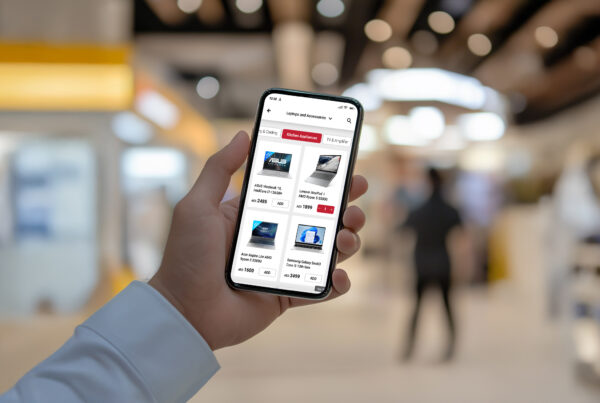In the race for faster deliveries, ecommerce brands are facing a hurdle that is slowing them down: the rising cost of last-mile fulfillment.
Last-mile logistics account for over $95 billion in losses a year. For regional ecommerce players trying to balance affordability with customer expectations, this cost imbalance isn’t sustainable. Delivery speed may drive satisfaction, but without cost control, it erodes profitability at scale.
So how can ecommerce businesses optimize delivery costs without compromising the very experiences that define their brand promise?
This isn’t just a logistics question — it’s a strategy question. And the answers lie in re-examining every layer of delivery operations: from route planning and workforce management to packaging, partner models, and data visibility.
The Real Cost of “Fast”
Speed sells but it comes with an invisible price tag. The promise of same-day or next-day delivery has reshaped customer behavior, but the economics haven’t caught up.
This gap is where inefficiency hides. Failed deliveries, long detours due to traffic, and underutilized vehicle capacity all add up — not only inflating per-order costs but also increasing emissions and turnaround time. The challenge isn’t just about speed anymore but about making speed sustainable.
Speed has its price and it’s not always paid in currency. The constant race to deliver faster pushes drivers, and local hubs to operate on thinner margins of time and money. Corners get cut, vehicles bear the brunt, and minor errors ripple through the chain as delays, reattempts, or lost parcels. What begins as a promise of convenience and great customer experience can chip away reliability in the long run.
But speed doesn’t have to come at the cost of stability when businesses know which levers to pull.
Three Strategic Levers for Cost Optimization
Most ecommerce businesses tend to focus on technology upgrades — new routing systems, faster dispatch, or gig-driver integrations — without first understanding where costs are actually leaking. In reality, sustainable optimization happens across three interlinked areas: planning, execution, and visibility.
1. Intelligent Planning with Predictive Data
Forecasting has evolved from a static process to an adaptive, data-driven one. Predictive analytics allows businesses to anticipate demand surges, seasonal spikes, and delivery bottlenecks before they occur.
For instance, AI-powered route optimization can analyze live traffic data, delivery windows, and driver capacity to dynamically assign orders — minimizing mileage while improving delivery times. Companies using automated dynamic routing reduce operational costs by up to 15–20% while improving on-time rates.
Businesses can still stay ahead in the race by enabling this kind of automated dispatch logic, translating predictive insights into real-world efficiency gains.
2. Smarter Workforce and Fleet Utilization
Labor and fleet expenses are often overlooked, but they represent a significant share of total delivery costs in ecommerce fulfillment.
A mixed-fleet model — combining owned vehicles for core routes and gig drivers for overflow — allows businesses to flex capacity in real time. Workforce management platforms can further reduce idle time and overtime payouts by aligning shifts to demand forecasts.
For example, this is a case in point of how this regional ecommerce retailer used dynamic routing and automated driver assignment to reduce its drive time per order by 12% within three months, while maintaining a 89% increase in the driver utilization rate which eventually culminated into a higher delivery success rate.
3. Unified Visibility Across Operations
Without an integrated view of delivery performance, optimization becomes guesswork. Yet, many regional ecommerce players still operate with fragmented systems — one tool for orders, another for fleet, and spreadsheets for tracking KPIs.
A unified visibility layer brings all this data together. Real-time dashboards can track cost per kilometer, failed delivery rates, and customer NPS in one place — enabling faster interventions. Businesses with unified logistics visibility improve their decision-making speed by 34% and reduce last-mile costs by 12%.
Costs beyond Deliveries
An often-ignored aspect of the rising overheads is packaging. Oversized or non-standard packaging leads to fewer parcels per trip, wasted fuel, and higher shipping fees.
Small changes — such as adopting recyclable, right-sized packaging — can therefore directly influence both cost and sustainability metrics.
But the true cost that a business pays is the cost of letting inefficiencies crack open your sales pipeline.
With 58% of consumers considering “real-time delivery tracking” a top priority and 87% customers stating that “integrity and reliability” in a business are important factors for them to continue utilizing its services, it’s clear that trust is paramount. A subpar experience for a customer can not only dilute that trust but also cost you a loyal customer which is a heavy price to pay.
Turning Data into a Competitive Advantage
Data alone doesn’t optimize costs but how you use it does. Ecommerce businesses that centralize delivery, customer, and operational data are better equipped to forecast, allocate, and adapt.
Predictive demand mapping, driver scoring, and even customer clustering like grouping orders by delivery radius, all help improve cost efficiency. Organizations leveraging data-driven delivery decisions can achieve 30% faster delivery and 20% lower costs on average.
As explored in this guide to managing restaurant labor costs, intelligent workforce allocation can turn data visibility into actionable insights — a principle that applies equally to ecommerce operations.
Data can determine the future of your business and in a way, make or break it.
However, data is just the tip of the iceberg when it comes to delivery optimization. While analytics can etch the path ahead for your business, delivery cost optimization is a balancing act that requires tact.
The Future of Delivery Cost Optimization: Balancing Cost, Speed, and Experience
In 2025 and beyond, the e-commerce delivery conversation won’t just revolve around “how fast” but “how intelligently” brands can move goods. Consumers still value speed, but a majority of them now prioritize reliability and transparency over ultra-fast delivery windows.
That shift gives regional ecommerce players room to rethink delivery models that hinge on smarter routing, flexible capacity, and transparent communication rather than unsustainable one-hour promises.
In other words, cost optimization goes beyond cutting corners, it’s about creating alignment between operational efficiency and customer trust. Delivery cost optimization isn’t a one-time exercise; it’s an evolving strategy that reflects how ecommerce itself is changing. Businesses that combine operational intelligence with actionable insights will control costs and build more resilient, data-driven, and customer-centric supply chains.
As the last mile becomes both the most expensive and the most defining part of e-commerce, those who master efficiency — not just speed — will own the future of fulfillment.
The world of business has never been more unpredictable. From unforeseen supply chain shocks to rapidly changing consumer behaviors, e-commerce businesses are constantly navigating a maze of new challenges. The traditional models of operational planning, once reliable, are now proving to be brittle in the face of this volatility. For businesses to thrive, they must abandon the static playbook and embrace a dynamic approach. This new paradigm entails building an operational backbone so strong that it can absorb disruptions and adapt on the fly.
At Lyve, we call this the art of translating strategic vision into a resilient operational flow. It’s the process of fortifying your business from the ground up, ensuring every component is not just efficient, but also future-proof.



